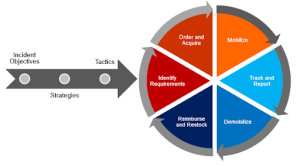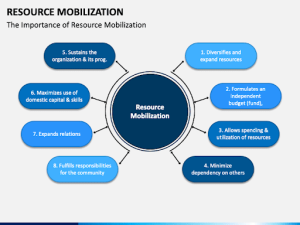Which resource management task deploys or activates personnel and resources?
Which Resource Management Task Deploys or Activates Personnel and Resources? The quickest response is mobilization. One of the most crucial phases of a project management process is mobilization, which involves gathering the resources (money, people, and equipment) required for a certain project.
Which task in resource management involves the mobilization or activation of employees and resources? We must first define and discuss the significance of resource management before we can respond to this query.
What Is Resource Management, and What Roles Does It Play?
The process of gathering all the funds, technology, and personnel required for a specific project is known as resource management. In order to achieve value, it also entails scheduling personnel and allocating all available resources.
Imagine that you are a resource manager for a business and you have a new problem or product to manage that throws the entire team off course. To complete a full management cycle, resource management involves a number of activities and procedures.

The steps include:
- Identifying requirements
- Ordering and acquiring
- Mobilizing
- Tracking and reporting
- Demobilizing
- Reimbursing and restocking
Which of the following are resource types within management?
In project management, various types of resources play a crucial role in the successful execution of a project. These resources can be broadly categorized into seven main types, each contributing to different aspects of the project. Let’s explore these resource types in more detail:
- Services:
Services encompass external expertise or specialized knowledge required for specific project tasks. These may include consulting services, legal advice, or IT support.
- Labor:
Labor refers to the human effort required to complete project activities. It includes both the project team members and any external contractors or freelancers involved in the project.
- Equipment:
The equipment comprises the physical tools, machinery, and technology necessary for project execution. This can range from simple office equipment to complex machinery or software systems.
- Materials:
Materials encompass the tangible resources needed for project deliverables. It includes raw materials, components, supplies, or any physical items utilized during the project.
- Money:
Money represents the financial resources allocated for the project. This includes the project budget, funding, and financial assets required to support project activities and achieve project goals.
- Time:
Time is a critical resource in project management. It refers to the duration or schedule allocated for project tasks, milestones, and overall project completion.
- Space:
Space refers to the physical environment or facilities required for project activities. It can include office space, meeting rooms, and manufacturing facilities. Or any infrastructure necessary to support project operations.
Efficient management and allocation of these resource types are essential for project success. Project managers must carefully plan, monitor, and optimize the utilization of resources. To ensure timely delivery, cost-effectiveness, and quality outcomes.
Which resource management task activates or deploys resources and personnel?
One of the most crucial phases of a project management process is mobilization, which involves gathering the resources (money, people, and equipment) required for a certain project. Utilizing existing resources while also identifying new ones is a part of resource mobilization. It mobilizes staff and assets for your project.
Projects have deadlines; therefore, this process needs to be thoroughly planned out. You need to know who will work on what, how long each task will take, and whether the funding allocated will be sufficient for your project.
Resources/funds
The project’s budget determines its size and length. Given the necessity of properly allocating these monies among workers, assets, and other crucial components, it is a crucial component of project management.
Personnel
The project’s necessary staff are activated during mobilization. You require personnel whose abilities, free time, and readiness align with the strategy of your business. Although it is customary to hire new individuals with the required expertise. There are occasions when we can already have teams assembled that are prepared for these new jobs. When your product receives additional features or your business gets new departments, this is typically done.
Because your team’s and project’s entire agile environment depends on the proper staff. It is crucial to make careful selections when hiring.
Equipment
The mobilization process includes acquiring the appropriate equipment because it provides everything required for project implementation. Your team members cannot perform well or to the fullest extent possible without the proper tools.
Project managers may find it difficult to keep track of all these things. Therefore, the easiest way to stay organized is to use time and task-management apps like Easynote. These tools will help you manage your time, resources, and mobilization processes effectively.
The Value of Resource Mobilization
In order to ensure that acquired resources are usable and prepared for deployment. Resource mobilization’s primary objective is to ensure their availability. Close coordination with HRs, and project managers. Other individuals who can guarantee a well-organized resource mobilization are necessary for this.
If you’re wondering which task in resource management fosters cooperation between supplier management teams and vendors, it’s mobilization.
The importance of resource mobilization must be understood now. That we are aware of whatever resource management task deploys or activates individuals and resources.
Resource mobilization is crucial for a number of reasons, all of which we will list and describe.

Resource mobilization increases and diversifies available resources.
Using the resources you obtain, you may predict how varied your company will be in the future. Hiring individuals with diverse backgrounds and skill sets enriches your team and creates many opportunities for innovation and advancement.
It is always beneficial to gain knowledge from fresh perspectives, ideas, and abilities. These new recruits, who offer a more distinctive approach to work, can also benefit companies that hire freelancers from other regions of the world.
Resource mobilization creates an independent budget
A new budget is required when beginning a new project. This is especially true if nothing included in the project has ever been employed by your business. This is crucial for budget planning, which must be done in order to allocate cash before the project even begins.
Resource mobilization permits the use and expenditure of resources.
You must allocate your resources wisely because they will be utilized throughout the entire project. During project implementation, there are a lot of things that need to be handled, and having the appropriate resources will help you come up with fresh ideas and inspire your staff.
By mobilizing resources, dependence on others is reduced.
You will become self-sufficient when you assemble a strong staff that meets all of the requirements of your business. There won’t be a need for outside collaboration, and being in that position is incredibly satisfying. This can help you avoid a variety of problems that may arise while working with outside teams. You don’t need to be concerned about misunderstandings, divergent objectives, etc.
Resource mobilization ensures the organization’s survival and advancement.
Many of your other issues will be answered once you realize that mobilization is the resource management task that deploys personnel and activates resources. When you consider the procedure, mobilization actually keeps the organization going since it gives it everything it needs.
Resource mobilization makes the most of domestic resources and expertise.
The business and culture of your firm are enhanced by using domestic resources and talent. There is no need for outside sources of expertise or funding that could keep the business together and increase self-sufficiency.
Relations are expanded by resource mobilization.
When you hire people to perform certain jobs, your network grows and your business develops. When you bring on new employees who can provide your business with fresh perspectives and methods, there are almost always many advantages.
The community’s obligations are fulfilled through resource mobilization.
It is your duty to lead a solid team that can rely on one another and functions without any alterations. The entire team will feel more confident and motivated to act when they know they have all they need. The community and overall satisfaction are impacted by all of this.
Potential Issues With Resource Management
When assigning tasks and personnel to your projects, you should be prepared for resource management’s potential for issues. Here are a few of them, along with solutions for project managers.
Excessive use of resources
Even if managers allocate resources properly, what happens if they allocate more than is required? It is crucial to be ready for this eventuality and make the best resource allocation decisions feasible. You will avoid plenty of wasteful costs and subpar overall quality by doing this. Although it may be difficult at first, perseverance will pay off in the end.
Inadequate use of resources
When you do not allocate your resources in the most practical and effective manner, poor results can result. This may result in the wastage of resources, performance issues, and results that are far from ideal. This can also be resolved by carefully allocating resources and investing time in doing so.
Inadequate planning
Incomplete planning could lead to issues with resource management as a whole, including unrealistic deadlines, false assumptions, or insufficient resources. This also occurs when key stakeholders are not included in the process. Prior to this happening, it’s critical to pay attention to it and repair any errors as soon as you can. Unrealistic timeframes may cause you to become frustrated and overburdened, which will work against you.
Inadequate supervision and monitoring
When control methods and monitoring are not carried out properly, it might result in a variety of issues or setbacks when implementing your project. Increased expenditures, missed deadlines, or poor results are a few consequences of this. You should take care of the project throughout all phases of development to avoid this.
Monitoring is crucial because it instills in your team members the mindset that errors must be swiftly fixed and that producing subpar outcomes is not an option.
Inadequate comunication
It’s critical to interact with the other team members because breakdowns in communication can lead to issues down the road. Without effective communication, it is impossible to expect your team to collaborate effectively, regardless of how frequently you check on their progress and how you allocate resources.
Members of your team should feel free to communicate with you and share problems and suggestions. When they do, you will also gain a better understanding of any obstacles or issues. This can help you be more prepared for some challenges, and you should respect those who express their worries and thoughts to you.
Diverging priorities
Three distinct areas—cost, schedule, or quality—can be given differing levels of importance by various teams. While some clubs may place a higher priority on the calendar, others may do the opposite. Resource managers must strike a balance between competing goals since failure to do so may result in misunderstandings. A lack of progress toward a common objective and continued inconsistency.
Lack of flexibility
If you are in charge of managing resources, you must create a flexible plan. Your plan is not effectively developed if it cannot adjust to unexpected changes in teams or schedules. Resource managers would struggle to react appropriately without flexibility. Changes in expenses and priorities occasionally need to be made right away.
If your plan isn’t adaptable enough, your team members might not know what to do if something unexpected changes. Delays and poor quality may result. If you work in an agile setting, your strategy should constantly account for changes.
It is wise to have a solid resource management application or software in order to prevent all these issues. You can use these tools to better organize your work, maintain consistency, and quickly keep an eye on every step.
The Resource Management Tool: What Is It?
Any tool or piece of software that can assist you in managing resource planning and mobilization is a resource management tool. This programme ought to
- Simple to use: Software that is user-friendly is preferred since it saves time on training new users.
- Collaboration-focused: The tool should make it simple for you to work together with your team because it is essential for you to communicate with them from the app or tag them on significant assignments.
- Ability to combine other tools: Your tool should be able to incorporate other tools into the app, saving you a lot of time from having to discover these apps separately, such as calendars or Google Meets.
- Display the project’s progress and deadlines: It’s crucial to have a visual representation of the project’s development, the dates of its deadlines, and the amount of money allocated to various elements.
There are numerous tools that meet these requirements. Among them is Easynote. It is a 5-in-1 program that combines task management, timelines, and personal and professional calendars. It keeps track of team members, deadlines, and spending limits.
Asana, Trello, and Monday Sales are additional comparable programs.
Work involving resource management that you can do
All resource management activities will put your ability to create an effective management plan and your project management skills to the test. It’s crucial to always learn new skills and methods and to stay current.
There are several resources and training programs that can help you develop your abilities. Also, boost your self-assurance in a project or resource management. You just need to make sure you have patience. When you first start and don’t give prospective issues a lot of importance. This job route can be highly lucrative. Try to avoid them, but if you can’t, accept them as a necessary part of the process.
We hope that this article helped you understand some key concepts and provided answers to some of your queries concerning resource management. If you are interesting in learning more about project planning, you can read this article to find out more.

1 thought on “Which resource management task deploys or activates personnel and resources?”